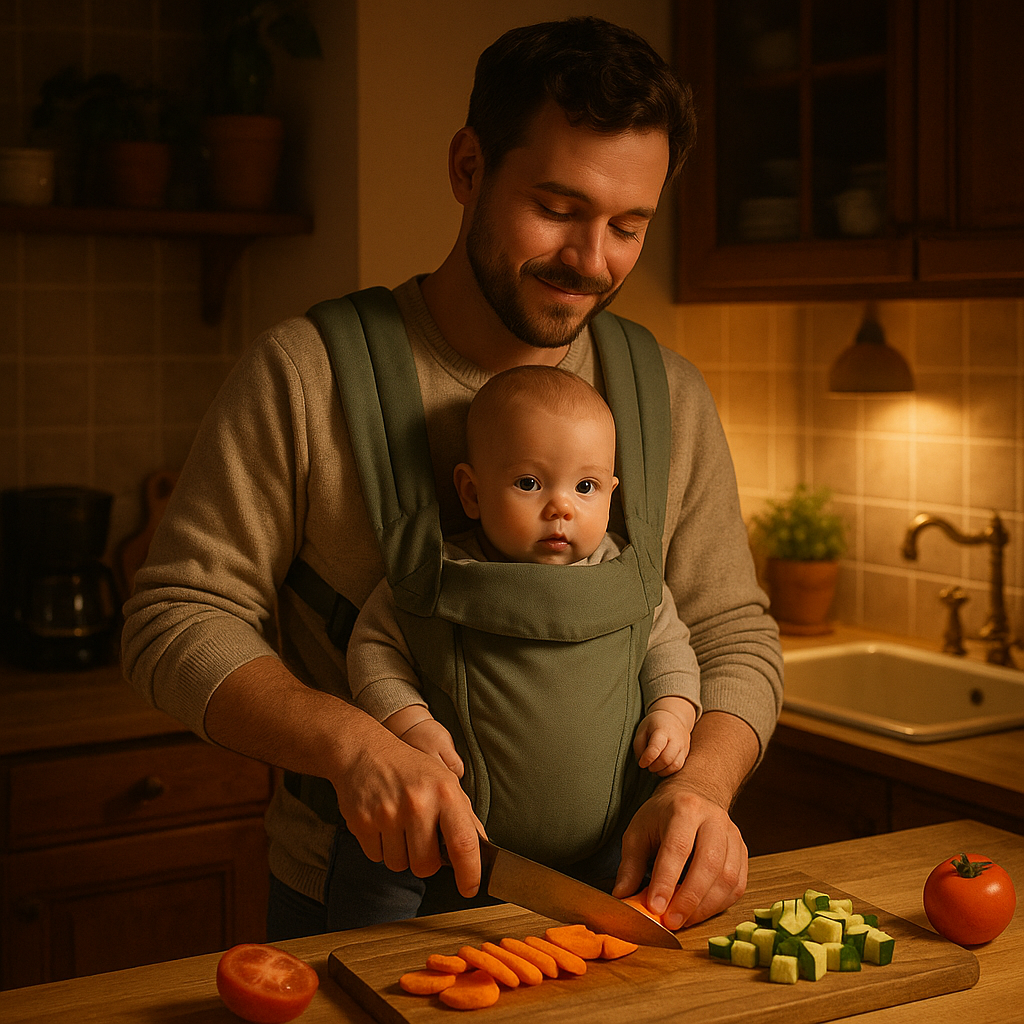Your newborn’s brain forms 1,000 new connections every second, and secure attachment determines which ones endure. These early neural pathways become the foundation for emotion, language, and learning. When you lock eyes with your baby, cuddle skin-to-skin, or sing a playful rhyme, you’re not just comforting them—you’re building their brain for a lifetime.
- What exactly is “secure attachment,” and why does it matter for a baby’s brain?
- Which brain regions and hormones are shaped by early bonding?
- How do “serve and return” interactions build lifelong neural networks?
- What lifelong benefits does secure attachment unlock?
- Which factors promote—or disrupt—secure attachment?
- What practical, daily habits help parents foster secure attachment?
- How does modern life create new challenges—and solutions—for secure attachment?
- What do parents ask most about secure attachment?
- Final Thoughts: How Secure Attachment Today Shapes Tomorrow’s Brain
What exactly is “secure attachment,” and why does it matter for a baby’s brain?
Secure attachment happens when your baby feels safe, seen, and soothed through consistent, warm caregiving. This bond creates an “internal working model” where the world feels reliable. Research suggests about 66% of infants in Western studies develop this secure bond, fostering stronger connections between the amygdala (emotion center) and prefrontal cortex (thinking hub), according to ScienceDirect: Neural correlates of attachment security.
When you notice a tiny yawn and offer a cuddle, you’re doing more than comforting; you’re telling your baby’s stress circuits to stand down, letting energy flow into growth and learning. For a deeper dive into these back-and-forth moments, visit Serve-and-Return: Building Your Baby’s Brain Through Play.
Which brain regions and hormones are shaped by early bonding?
Responsive caregiving, like gentle touch or a soothing voice, triggers oxytocin release in both you and your baby, reducing stress hormones. This “bonding hormone” calms the amygdala’s fear response and strengthens social circuits. Secure attachment also:
- Enhances connections between the prefrontal cortex (decision-making) and limbic system (emotions).
- Supports hippocampal growth for better memory and spatial learning.
- Balances the hypothalamic-pituitary-adrenal (HPA) axis, reducing stress responses.
Skin-to-skin contact, especially in the first hour after birth, stabilizes heart rate and temperature while lowering cortisol. For tips on creating a calming environment, see Low-Stress Environment: Why It Boosts Baby’s Brain.
How do “serve and return” interactions build lifelong neural networks?
Every smile you mirror strengthens your baby’s synapses.
Here’s how it works:
- Baby “serves” a cue—coo, gaze, wiggle.
- You “return” with a word, grin, or gentle touch.
- Matching signals fire in both brains, strengthening the pathway (Hebbian learning).
- Repetition stabilizes the circuit, making skills like language or self-soothing easier later.
Research from Harvard Center on the Developing Child: Serve and Return suggests toddlers in high serve-and-return homes often show stronger language skills by age two. A simple game of peekaboo engages the dorsolateral prefrontal cortex, boosting focus and memory.

For more playful ideas, hop over to Face-to-Face Play: Boosting Your Baby’s Social Skills.
What lifelong benefits does secure attachment unlock?
Securely attached children tend to recover from stress more effectively and develop stronger language and social skills, setting a foundation for school success. These children experience lasting advantages, including:
- Stronger peer relationships and greater empathy.
- Reduced likelihood of anxiety and depression in adolescence.
- Enhanced executive function skills, such as impulse control and planning.
- Higher probability of forming secure attachments as adults, fostering a positive generational cycle.
These benefits stem from the neural pathways strengthened through consistent caregiving, which highlight improved emotional regulation and cognitive development.
Which factors promote—or disrupt—secure attachment?
Consistency, not perfection, builds secure attachment.
Supportive factors include caregiver mental wellness, predictable routines, and responsive feeding—whether breast or bottle. Babies can form secure bonds with up to four to six trusted caregivers, such as grandparents or daycare staff, as explored in Daycare vs. Stay-at-Home: Impact on Baby’s Development.
Disruptors include:
- Untreated parental mental health challenges, like depression or chronic stress.
- Excessive screen time limiting face-to-face interaction.
- Inconsistent caregiving or unpredictable schedules.
While cultural practices differ, responsiveness is the universal key.
What practical, daily habits help parents foster secure attachment?
Small, consistent rituals spark lasting brain growth.
These evidence-based habits build secure attachment and support your baby’s development:
- Gentle touch: Daily infant massage promotes bonding and may boost growth hormones. Explore techniques at Infant Massage: Does It Boost Your Baby’s Brain?.
- Eye-level chatter: Narrate routines in sing-song “parentese” to stimulate the auditory cortex and early language skills, as per studies on parentese and language development.
- Prompt comfort: Responding quickly to cries builds trust without “spoiling.”
- Babywearing: Carrying your baby close supports bonding and emotional security while allowing mobility.

How does modern life create new challenges—and solutions—for secure attachment?
Digital distractions can disrupt bonding, but simple strategies help.
Smartphones often interrupt serve-and-return moments critical for attachment.
Try these solutions:
- Device-free zones: Set aside phone-free times during feeds, play, or diaper changes to focus on your baby.
- Micro-bonding rituals: For busy parents, short moments like morning cuddles or bedtime stories foster connection.
- Virtual support: Online parent groups offer emotional backup and bonding tips, especially post-pandemic, helping caregivers stay connected.
- Pet interactions: Pets can enhance emotional security for babies, as explored in Family and Pets: How They Shape Your Baby’s Brain.
What do parents ask most about secure attachment?
-
Does Responding Immediately Spoil a Baby?\ No—quick comfort reduces stress and builds independence. Responding promptly to cries lowers stress hormones, like cortisol, and fosters trust, which supports later self-reliance.
-
Can Attachment Be Repaired After a Rough Start?\ Yes—consistent care can reshape attachment patterns. The brain’s plasticity allows loving, responsive caregiving or professional support to improve attachment at any age.
-
What Are Clear Signs My Baby Is Securely Attached?\ Look for trust and exploration. Signs include seeking closeness, calming quickly in your arms, and exploring confidently while checking back with you.
-
How Much Time Should I Spend Bonding Each Day?\ Quality matters more than quantity. Even short, responsive interactions—like 10-15 minutes of focused play or cuddles—strengthen attachment.
-
Can Multiple Caregivers Confuse My Baby?\ No—babies can bond with several caregivers. Up to four to six consistent caregivers, like family or daycare staff, can foster secure attachment if responsive.
For worries about clinginess to strangers, visit Stranger Anxiety: How It Affects Your Baby’s Brain.
Final Thoughts: How Secure Attachment Today Shapes Tomorrow’s Brain
Every cuddle, coo, and comforting whisper lays the tracks for your child’s emotional resilience and intellectual spark. By choosing responsiveness over distraction—even amid modern pressures—you hand your baby a neurological head start that lasts a lifetime. Keep the momentum going with our playful guide to serve-and-return interactions, and share the science of love with friends who are starting their own bonding journey.